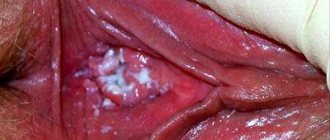Ureaplasmas are small microorganisms with a diameter of about 0.3 microns. When examining women with chronic inflammatory diseases (colpitis, cervicitis, endometritis, adnexitis), these microbes are often isolated. They are also detected in the absence of complaints at all. Therefore, gynecologists believe that ureaplasma in women can be pathogenic or cause latent carriage. They become dangerous when immunity decreases - after abortion, childbirth, menstruation, insertion or removal of an IUD, general diseases or their exacerbations.
Ureaplasmosis - what is it?
The smallest representatives of human bacteria are ureaplasma, which lives on the mucous membranes of the genitourinary system.
It is worth noting that by the type of their activity they are classified as intracellular parasites.
Patients who suffer from inflammatory diseases of the genital area are almost always affected by ureaplasma.
However, in some cases, it is possible that pathogenic flora may be present in healthy women who do not have other diseases.
For this reason, there is an opinion that the reproduction of ureaplasma can occur without the presence of pathological processes in the body.
The activity of the bacterium is recorded in the presence of reduced immunity after certain manipulations. This could be an abortion, childbirth, menstruation, or a relapse of certain chronic ailments.
Ureaplasmosis is an infectious disease that occurs due to the active reproduction of a membrane parasite. Not only women, but also their sexual partners can suffer from the disease. Diagnosis of the disease most often occurs between the ages of 16 and 32 years.
It is worth understanding that the pathogen present in the body cannot always cause further development of the disease. Favorable factors must be present to trigger infection activity.
The disease can take various forms:
- acute;
- subacute;
- weak current;
- chronic type.
The most common situation is when a woman is considered only a carrier of ureaplasma.
How is ureaplasma transmitted?
Ureaplasma is transmitted sexually. Infection does not occur in everyday life. There is no evidence that you can get sick by using the same towel, spending time in the same bed, or while visiting a sauna or swimming pool.
Children can be infected from a sick woman during childbirth. There is evidence that in childhood ureaplasma goes away without any treatment. In adults, infection can lead to acute or chronic inflammation of the genitourinary system.
Prevalence of ureaplasmosis
The statistics on this disease are depressing, since in girls who have just been born, the presence of ureaplasma on the genitals can already be detected. According to experts, every third child suffers from this. By the way, boys are much less likely to be carriers of pathogenic microflora.
It is noted that children who received an illness during childbirth can count on self-healing. This is very common in boys due to the structural features of their body.
Schoolgirls who have not had sexual intercourse suffer from ureaplasma infection in 6-20% of cases.
The percentage of infection is very high in people who are sexually active. Almost half of women are carriers of the bacteria, but the male part of the population suffers from ureaplasma much less frequently. Moreover, unlike women, they can self-heal the problem without getting any complications.
Ejaculate for ureaplasma using PCR
In some cases, the doctor recommends that the patient check for the presence of ureaplasma in the body by analyzing the ejaculate (sperm).
For greater reliability of the results, it is important to follow a number of manipulations:
- men are advised not to urinate or perform toileting of the external genitalia for 6 hours before collecting ejaculate (sperm),
- for 24 hours you should avoid sexual intercourse and use topical ointments,
- do not carry out hygiene procedures immediately before collecting biomaterial (it is better to do this 8 hours before collecting material),
- during control diagnostics, wait 10-14 days after taking antibiotics and antifungal drugs.
Causes of development in women
Infection of patients almost always occurs after sexual intercourse. If we talk about possible household contamination, then not a single similar case has been identified throughout the entire period. Therefore, in common areas, after wiping with one towel or similar situations, it is impossible to get ureaplasmosis.
The disease in women has a special feature - the acute nature of the disease occurs in rare cases. Urealasmas are able to reside inside the cells of the body and do not have a negative effect on the female body.
The main factors that provoke ureaplasmosis are:
- Processes or diseases that suppress the immune system.
- Hormonal imbalance. However, the changes may not be pathological in nature. Relapse may be caused by the period of the menstrual cycle or pregnancy.
- Frequent sexual intercourse with different partners. Any new man with whom women have sex is considered a source of opportunistic flora. For this reason, after such contact, the development of a disease of the reproductive system may occur.
- Diagnostic or therapeutic procedures that are carried out in the area of the genitourinary system. We are talking about placement of a spiral, termination of pregnancy, catheterization, and surgical techniques.
By avoiding such situations, you can avoid contracting this infection.
Routes of transmission of ureaplasma
How can you become infected with ureaplasma? The main route of transmission of ureaplasma is sexual contact, including oral. Infection is also possible from mother to child during pregnancy (through amniotic fluid) and childbirth (through passage through the birth canal). A child can be a carrier of the infection without any symptoms for a long time.
Most often, ureaplasma makes itself felt in adulthood in the presence of provoking factors : weakened immunity, changes in hormonal levels, the presence of concomitant chronic diseases, frequent stress, surgical interventions, promiscuous sex life. It is not excluded, although it is very unlikely, that the contact and household route of transmission of ureaplasma through common hygiene items, in a sauna, bathhouse, or swimming pool.
Signs of ureaplasmosis
You can find out about the presence of an infectious process in the genital area by various factors.
Ureaplasmosis gives the following symptoms:
- after the end of sexual intercourse, a woman notices the presence of bloody discharge from the vaginal cavity;
- during the process of emptying the bladder, pain and burning are well felt;
- discomfort and unpleasant sensations during sexual intercourse;
- problems with pregnancy and gestation;
- nagging pain in the lower abdomen.
- strange vaginal discharge.
At the first signs of such symptoms, it is recommended to visit a doctor to determine the diagnosis. A complete diagnosis of women's health will first be required.
Symptoms
There are always ureaplasmas in the human body, but for their active activity to begin, certain reasons must arise.
Provided that one of the partners has this disease, but it does not manifest itself in any way, the second participant in sexual intercourse will soon become infected. Moreover, people suffering from this disease may not know about its presence.
The first signs are observed in a woman after a couple of weeks, sometimes this period drags on for a month. Provided that there were no symptoms and no treatment was received, ureaplasmosis becomes chronic.
Main symptoms of the disease:
- Unpleasant sensations in the vagina. During and after sexual intercourse, a woman may experience pain and discomfort.
- Frequent urge to go to the toilet. This symptom is especially common in the female half of the population. Moreover, when emptying the bladder, pain may be felt, and sometimes there is a burning sensation in the urethra.
- Vaginal discharge. At first they will be transparent and have no odor. Over time, the mucus will acquire a yellowish tone and a specific odor will emanate from it. This symptom will indicate an inflammatory process in the genitourinary system.
- Lower abdominal pain. By their nature, they are more reminiscent of cramps and require medication relief. Moreover, this symptom signals extensive inflammation in the cavity of the urinary system.
Classification
There are several ways to classify this disease: according to the severity of its manifestations, it is often divided into asymptomatic carriage and an active inflammatory process (typical of other forms). The duration of ureaplasmosis is:
- Early - is divided into sluggish (erased symptoms, can be observed in the incubation period - 2-4 weeks), acute (pronounced manifestations, may be accompanied by severe intoxication; lasts 1-2 months, damage mainly the urinary system), subacute (transitional stage to chronic ).
- Chronic - appears 2 months after the development of any of the previous forms. The organs of the reproductive system may be affected. Mostly it looks similar to carriage, but is periodically accompanied by relapses, manifesting itself as an acute form. Stress factors are often the catalyst.
The most common option is when ureaplasma is present in women’s bodies, but does not manifest itself at all. Carriage in the absence of risk factors may never make itself felt, as in the case of a latent (hidden) course of the disease, but the bacterium is transmitted to a sexual partner. As soon as immunity decreases, a stressful situation occurs, hormonal levels become unstable, a woman may experience erased symptoms (rare mucous discharge, vaginal itching), but the general condition will remain normal, and the described manifestations will quickly disappear on their own.
Diagnostics
Diagnosing the disease is not difficult, however, research should be carried out 2 times. The initial collection is carried out to identify the diagnosis, and a repeat test is needed to identify dynamics.
Today, there are several manipulation options for detecting ureaplasmosis in women:
- Bacteriological. A smear taken from the cavity is transferred to specific nutrient media. This technique allows you to detect the disease or confirm the absence of infection. Moreover, the doctor identifies the sensitivity of ureaplasma to various groups of antibiotics. The material being tested is a scraping that is collected from the urethra or cervix. The price range of this procedure differs in its size when compared with other diagnostic methods. Ready results can be obtained within 5 working days.
- PCR. It is this type of chain reaction that is considered the most common method for making this diagnosis. The technique is accessible, and the results are given to patients in a short period. When genetic samples are found in the secretion of the cervix, the doctor makes a verdict about the development of the infectious process inside. In this case, the volume of pathogens and the severity of the response to antibiotic therapy cannot be identified.
- Serological test. It is distinguished by its inaccuracy, since as a result it shows the possible presence of antibodies to ureaplasma. The reason is that remnants of this pathological flora may remain after the course of treatment.
- Mutual Fund. The accuracy of the technique reaches a maximum of 70% and is highly accessible to the population. As a result, the test results will be indicative, since in this situation the presence of antibodies to pathogens is also detected.
During the period of submitting the material, there should be no menstruation, and tests are taken before the morning toilet. At the end of treatment, a control test is performed, which is taken no later than a week later.
Treatment of ureaplasma in women
The disease requires special attention; for the patient it is a very long process that requires a lot of patience and diligence. For a small course there is no way to beat it.
Indications for treatment
It’s worth mentioning right away that it is not always necessary to treat a disease with special antibacterial drugs. After all, this therapy requires compelling reasons in the form of evidence of the presence of microbes that cause the pathogenic process. Such a conclusion can only be issued by a gynecologist.
In what situation is it needed:
- The patient cannot conceive a child , it is necessary to find out the cause of the existing infertility. The test results show ureaplasmosis.
- A woman who regularly suffers from inflammatory processes in the reproductive system, who learned about a positive test for ureaplasmosis.
- Provided that a woman in labor with ureaplasmosis has lost her fetus and is planning a new conception. It would be more accurate to say that therapy is also carried out for those patients who otherwise had no problems with pregnancy, but the PCR result was depressing. Here we are talking about preventive therapy against bacteria.
Also, treatment is carried out for the woman’s sexual partner in order to stop the chance of re-infection.
The information is considered relevant for people who are undergoing infertility therapy, because the infection can destroy sperm. There is information that the disease has a bad effect on men's health. Prostatitis and erection problems may occur.
Treatment methods
Ureaplasmosis in women requires complex therapy, which includes many points. Failure to comply with some of them entails a recurrence of the disease or the transition of the disease to a chronic form.
For such an infection you need:
- sanitation of the vaginal cavity;
- antibacterial therapy;
- drugs to support the immune system;
- enzymes with anti-inflammatory effects;
- improving the state of microflora using a number of means (topically and cavity treatment);
- taking vitamin complexes;
- physiotherapy.
Preparations:
- Antibacterial agents are prescribed after receiving the results of the study . The specialist will need to determine the level of sensitivity of ureaplasma to drugs. Often, gynecologists use macrolides, tetracyclines or fluoroquinolones as the basis for therapy. It is unacceptable to take medications without diagnostic procedures. The reason is that the effect will not be achieved, and ureaplasma will not be destroyed due to lack of sensitivity to antibiotics.
- Vaginal suppositories will be required to sanitize the cavity. Such suppositories should contain an antibiotic and a substance that fights fungal disease.
- In case of ureaplasmosis in women, special attention is paid to treatment to improve immunity, as well as procedures that normalize the microflora of the genital area. In principle, ureaplasmosis in women is provoked by an extensive inflammatory process that occurs due to a weak immune system and dysbiosis in the vaginal cavity.
- Therapy always includes medications that contain interferon . For example, Genferon is especially popular.
- It would not be superfluous to prescribe drugs that stimulate the production of endogenous interferon (Cycloferon).
- Probiotics are not only consumed orally, but also treated on the genitals. Vagilac is inserted into the vagina.
- The course of treatment includes a complex of multivitamins and Wobenzym, a medicine enriched with enzymes.
Cycloferon
Genferon
Vagilak
Wobenzym
It is worth understanding that all the drugs described are not used at the same time.
There are many regimens that are prescribed for ureaplasmosis. Therapy is selected individually, the course depends on the results of diagnostic procedures and the clinical picture. Moreover, the period of the menstrual cycle is taken into account to achieve maximum effectiveness.
Folk remedies
The main objectives are to strengthen the body and reduce the effects of inflammation. For these purposes, herbal antiseptics (sage, chamomile, calendula) are used topically in the form of douches or baths. Infusions are prepared at the rate of 1 tbsp. spoon (without a slide) of dry herbs or flowers per 200 ml of boiling water, exposure 1 hour; then the infusion is filtered through 3-5 layers of gauze. You can add a decoction of oak bark, prepared in the same proportion. Infusions are not prepared for future use; each time you need to take care of a fresh portion. The course will require 7-10 procedures.
Drinks made from herbs or berries will help reduce inflammation and avoid complications of ureaplasmosis on the kidneys and joints. Tea made from lingonberry leaves and St. John's wort, a decoction of lingonberry berries and raspberry leaves work well. However, it is worth remembering that the diuretic effect that these drugs have can be a disservice during antibiotic treatment. Medicines will be eliminated from the body faster, and their concentration will decrease below the therapeutic level. Therefore, all folk remedies of similar action are acceptable only after completion of the main course of treatment.
Complications of ureaplasmosis
There is an unpleasant nuance - the causative agent of the disease is capable of leading a parasitic lifestyle not only inside the cell body, but also outside its cavity. For this reason, ureaplasmosis in women has a chronic course and is characterized by inconspicuous symptoms. Patients reach the doctor with a history of complications.
What could it be:
Persistent inflammatory processes in the bladder (cystitis) or chronic inflammation in the urethra (urethritis). Ailments are formed due to the fact that the infection is of an ascending type.- Secondary infertility. It affects the female organs due to long-term inflammatory processes in the body of the fallopian tubes and the cervix. Despite the fact that the patient will undergo treatment against ureaplasmosis, she may be diagnosed with obstruction of the fallopian tubes.
- Pyelonephritis. It occurs when the infection rises from the bladder and affects the kidneys.
- Vaginosis. It affects the sex life of women, since this pathology causes severe discomfort during sexual intercourse. Some patients have severe pain.
- Problems with the menstrual cycle.
- Oophoritis. Dangerous severe inflammatory process in the ovaries.
- Adnexitis. Inflammation that covers all the appendages of the uterus (we are talking not only about the ovaries, but also about the fallopian tubes and ligaments).
In addition to the health problems listed above, disease bacteria can negatively affect the egg. This phenomenon prevents a woman from becoming a mother, since conception does not occur.
Urine testing for ureaplasma using PCR method
A urine test using the PCR method is carried out mainly if there is a suspicion of inflammation of the bladder and urethra. This is especially true when infected in men.
Preparation for the study is as follows:
- before collecting urine, it is necessary to wash the perineum and genitals,
- collect the first, not the middle, portion of urine in the morning,
- Women are not prescribed the study during menstruation.
Consequences of not treating the pathology
- Due to the lack of normal therapy for ureaplasmosis, the disease will become chronic and bother the woman with constant relapses.
- With this type of disease, patients soon notice the structure of the urinary tract, inflammation and adhesions in the fallopian tubes, and erosion of the cervix. In some cases, an abundance of diagnoses leads to the development of an ectopic pregnancy.
- During the recovery period after childbirth, patients often develop inflammatory processes on the internal mucous membranes of the uterus.
- Sometimes, women with ureaplasmosis experience inflammatory joint diseases.
Mechanism of disease development
The pathogenesis of ureaplasmosis is based on adhesive-invasive properties (the ability to overcome the membrane barrier and attach or adhere to a surface) and enzyme-forming properties. Thanks to them, the bacterium that entered the genitourinary organs:
- Clings to the cylindrical epithelium located on the mucosa (attaches to its cells).
- It merges with the cell membrane and thereby gains the ability to penetrate the cytoplasm: the internal liquid environment of the cell.
- Begins the process of reproduction and production of an enzyme that has the ability to break down immunoglobulin A.
Against the background of what is happening (a decrease in the number of immunoglobulins of a particular group), the body’s defenses are reduced, and the immune response to the activity of infectious agents weakens. If the activity of ureaplasma, which has received pathogenic status, is low, the disease is asymptomatic, the inflammatory process is sluggish, and destructive changes are minimal. With high activity of the bacterium (against the background of accompanying factors), the symptoms of ureaplasmosis appear, because:
- tissue permeability increases;
- the vascular reaction increases;
- epithelial cells begin to break down.
Ureaplasma during pregnancy
Ureaplasmosis in women began to have an independent character after the connection between the disease and problems with bearing a baby was identified.
The infection can cause miscarriage, death of the fetus in the womb, or cause serious pathologies in the pulmonary system of the unborn child.
There is no exact certainty that the bacterium will cause complications during pregnancy.
Rather, a high percentage of miscarriage occurs if a woman has this disease and problems with the immune system.
The fact that ureaplasmosis develops in the body over a long period of time and is characterized by a large area of damage can also have a negative impact on health. Because of this clarification, ureaplasmosis in women is equated to an opportunistic infection.
In modern realities, doctors recommend planning your pregnancy in advance to avoid complications in the future. In preparation for this event, ladies are offered to undergo a full examination by a gynecologist.
A prerequisite is passing tests for possible infection with sexually transmitted infections. If measures are taken in a timely manner, there will be no problems with the health of the mother and her fetus.
During the period of bearing the baby, before undergoing laboratory tests, the specialist undertakes to give a referral to the woman, provided:
- history contains a record of previously identified infertility, fetal growth arrest or miscarriage;
- symptoms of complications of an existing pregnancy, infection of the child is in question;
- completion of laboratory tests on schedule;
- inflammation in the genitourinary system for an unknown reason.
Without taking a test, it is impossible to determine ureaplasmosis in women, since the main symptom may be the presence of vaginal discharge. In this case, the amount of mucus may be minimal.
During the missed period of time, when a woman does not know about the presence of infection, a problem with the development of the fetus may arise, a disruption in blood circulation inside the umbilical cord and placenta. However, no apparent reasons for these phenomena are found.
Treatment
Therapeutic therapy in pregnant women can be started no earlier than the second trimester. At this time, the fetus already has a formed chorion.
- Josamycin is considered the most popular macrolide drug with great effectiveness .
- In addition to it, the lady is prescribed medications that improve a woman’s immunity (vitamin capsules and adaptogens).
If therapy and specialist recommendations are followed, the disease goes away in almost all women. In exceptional situations, the course may be repeated.
Goals of the treatment plan for ureaplasmosis:
- defeat of pathogens inside the patient’s body;
- elimination of symptoms of the disease;
- reducing the volume of bacteria to a minimum.
If you discover a problem, you should not panic, as this is not a death sentence. If a woman undergoes timely therapy, she can expect a positive result.
Prevention of ureaplasmosis
Ureaplasmosis, which develops not only in women, is classified as an infection that is transmitted after sexual contact. For this reason, there are 2 levels of preventive measures. The first will be used before infection, and others - after.
For primary prevention it is recommended:
- sex with one sexual partner , whose health status should not raise questions;
- not to be involved in sexual promiscuity , forget about excessive sexual contacts with different partners;
- try to protect yourself using a condom to avoid infection;
- It is advisable not to forget about protection during oral sex (cases of infection through the oral cavity are not uncommon);
- treating the perineum and vagina with effective antiseptics after casual sexual contact (a week later you should get tested for infection).
When preventing the secondary type, the emphasis is on improving the immune system:
- folk method - hardening;
- transition to a healthy daily schedule;
- compliance with personal hygiene measures;
- regular intake of vitamin complexes;
- frequent visits to the local gynecologist;
- getting tested for STIs after having questionable sex.
Probiotics
To prevent candidiasis, simultaneously with antibacterial drugs, it is necessary to take probiotics - drugs containing “beneficial” microorganisms that are part of the normal microflora or contribute to its restoration.
The most effective modern probiotics include:
- Lactovit.
- Bifidumbacterin.
- Lactobacterin.
- Linux.
- Narine.
- Biovestin.
In the acute form of the disease, the administration of systemic antibiotics along with probiotics is often sufficient for successful treatment. In the subacute form, it is advisable to supplement such treatment with local antibiotics (vaginal tablets, douching).











